Cisco CCNP ROUTE – Route Redistribution
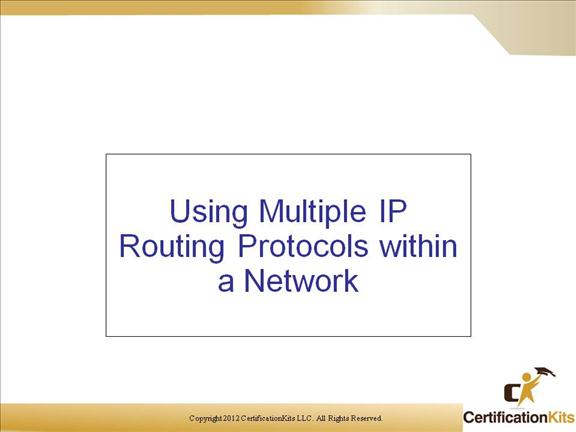
Cisco CCNP ROUTE Complex Routing Scenarios
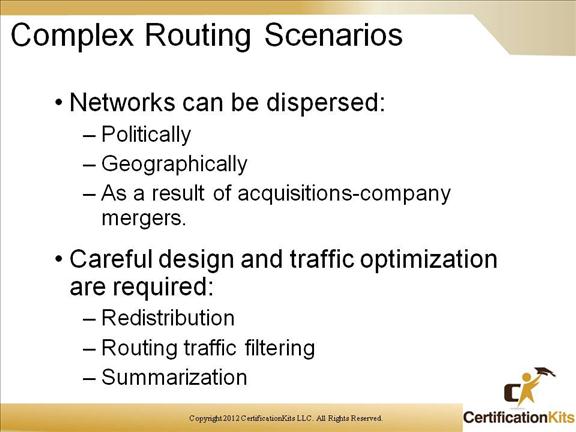
A well thought out network design allows for efficient use of IP Address summarization either within a routing instance or when redistributing routes between routing protocols. Filtering of routing traffic is also a benefit that can be used to manage traffic.
Cisco CCNP ROUTE Using Multiple Routing Protocols
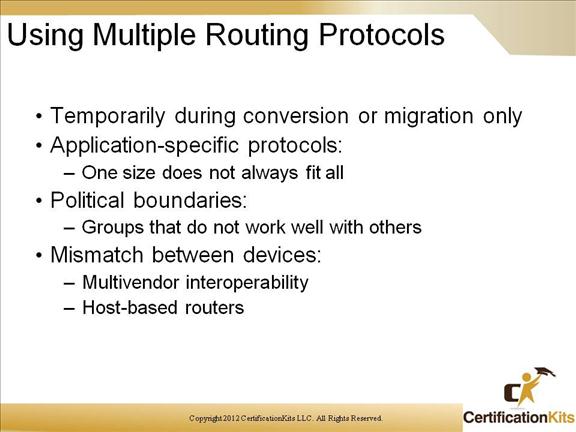
There are numerous reasons why multiple routing protocols could be deployed in a network. Some are listed on the slide above.
Cisco CCNP ROUTE Using Multiple Routing Protocols
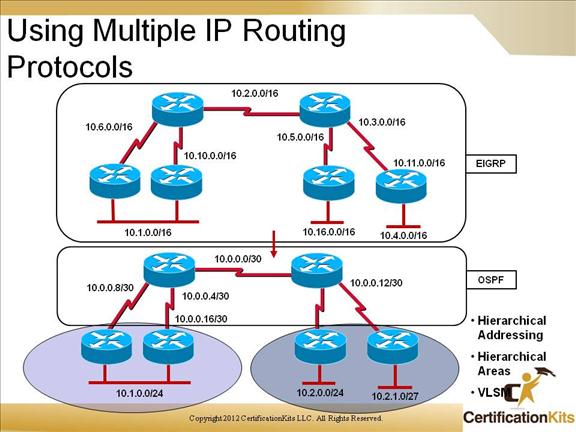
When running multiple routing protocols network administrators must conduct migration from one routing protocol to another or redistribute routes between them.
A detailed plan should be created by the network administrator prior to implementing any route changes. An accurate topology map is critical for success.
Cisco CCNP ROUTE Redistribution
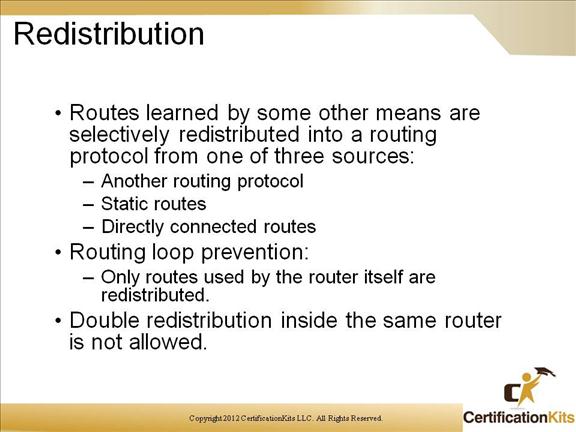
Route redistribution is a way of injecting routes learned by another routing protocol into another routing protocol. You can also redistribute static and directly connected routes.
Cisco CCNP ROUTE Redistributing Route Information
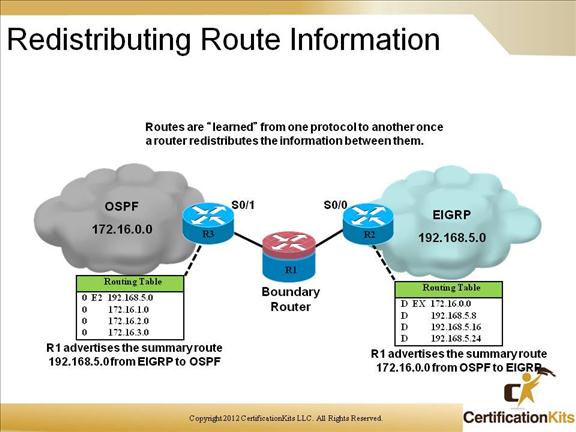
In the example above, R1 is participating in both OSPF and EIGRP while redistributing between them.
Route redistribution is the process of using a routing protocol to advertise routes that were learned by another means (e.g. another routing protocol, static routes or directly connected routes).
Cisco CCNP ROUTE Using Seed Metrics
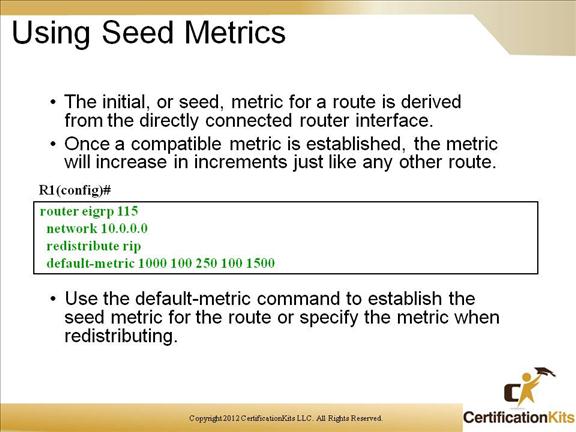
Since most routing protocols have different metrics, it is important to determine what metric to use when redistributing routes between routing protocols. The example in the slide above uses a default-metric command which specifies the default metric that will be used when redistributing RIP routes into EIGRP.
Cisco CCNP ROUTE Default Seed Metrics
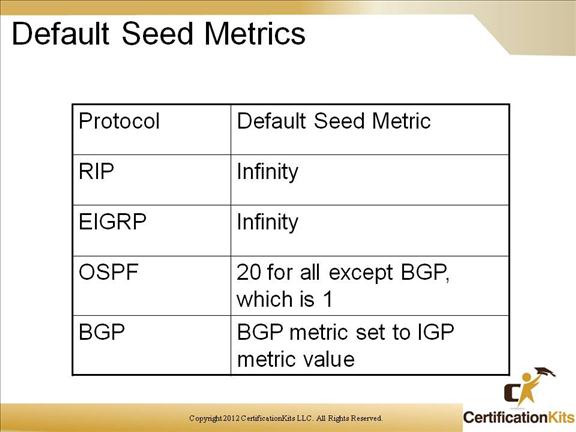
Defining the metrics that are used when redistributing routes between routing protocols is important since some default metrics are “Infinity”. The slide above lists the default metrics for RIP, EIGRP, OSPF and BGP.
Cisco CCNP ROUTE One-Point Redistribution
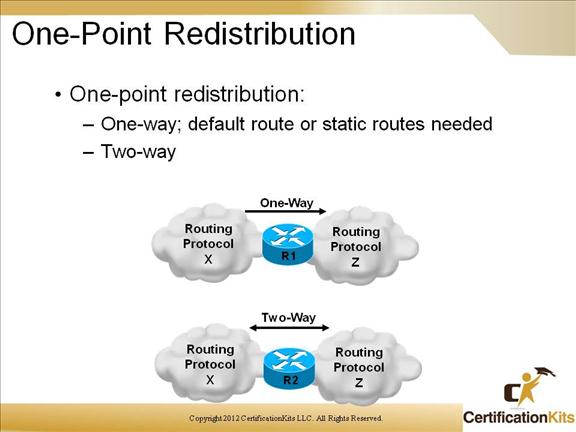
One-Point redistribution defines one redistribution point between two routing protocols. By this we mean routes re redistributed on only one router. The distribution can be:
- • One-way
- • Two-way
One-way route redistribution requires the use of a default route or static routes.
Cisco CCNP ROUTE One-Way and Two-Way Multipoint Redistribution
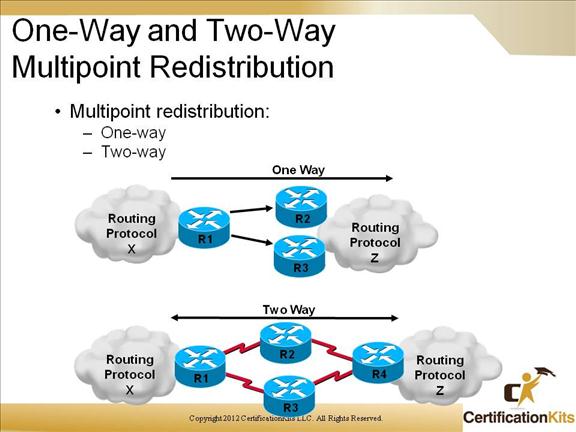
Multiple route redistribution occurs when redistribution is performed on two or more separate routers both running routing protocols. Possibilities are:
- • Multipoint one-way redistribution
- • Multipoint two-way redistribution
Multipoint route redistribution has the possibility of introducing routing loops so it has to be performed carefully. Even one-way multipoint route redistribution can be dangerous. Problems typically result in differences in administrative distance (AD) between two routing protocols.
Cisco CCNP ROUTE Redistribution Techniques
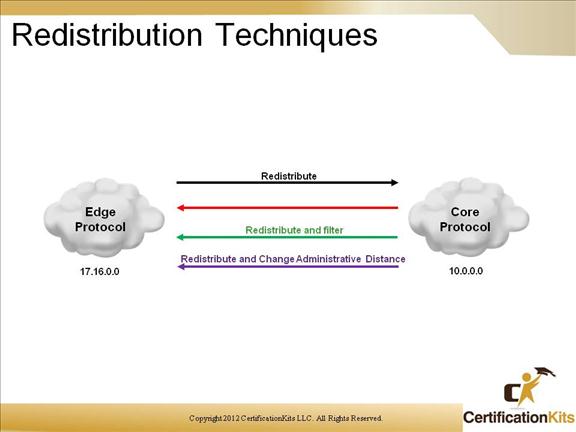
When redistributing routes between routing protocols the routes can be filtered. The Administrative Distance (AD) can also be modified. The safest way to perform route redistribution is to redistribute in only one direction and only on one boundary router within a network. While this is not always possible, it is the safest method.
If route redistribution must be performed in both directions or on multiple boundary routers, the route redistribution should be tuned to avoid problems like routing loops and suboptimal routes.
Options include:
- • Redistribute a default route
- • Redistribute multiple static routes about the core AS into the edge AS.
- • Redistribute routes from the core AS into the edge AS using route filtering to block inappropriate routes.
- • Redistribute all route from the core AS into the edge AS and from the edge AS into the core AS modifying the administrative distance (AD) that is associated with the external routes.
Cisco CCNP ROUTE Redistribution Implementation Considerations
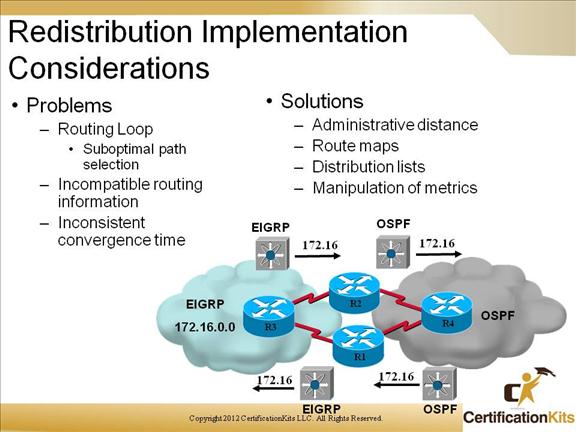
One of the main concerns when redistributing routes between routing protocols is the creation of routing loops and/or suboptimal routes. Potential solutions to routing loops and/or suboptimal paths are the use of route maps, distribute lists, or the manipulation of metrics and/or Administrative Distance (AD).
Key issues with route redistribution are as follows:
- • Routing feedback (routing loops): Routes received from one AS can be injected back into the same AS causing a routing loop.
- • Incompatible routing information: Different metrics among different routing protocols cause a problem here.
- • Inconsistent convergence time: Different routing protocols converge at different rates.
Cisco CCNP ROUTE One-Way Redistribution Issue
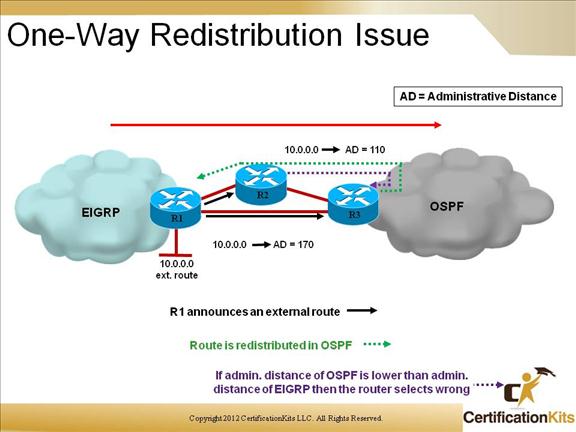
Administrative Distance (AD) is what a Cisco router uses to determine what route to select when two identical routes exist. The route with the lower AD is preferred. Multipoint one-way route redistribution can cause routing problems if routing protocols are using different administrative distances (AD). This can be if the receiving routing protocol supports different administrative distances for internal and external routes. Also if the external administrative distance of one routing protocol is higher than e administrative distance of the second routing protocol.
Protocols such as EIGRP, BGP and OSPF support different administrative distances for internal versus external routes.
Cisco CCNP ROUTE One-Way Multipoint Redistribution Issue
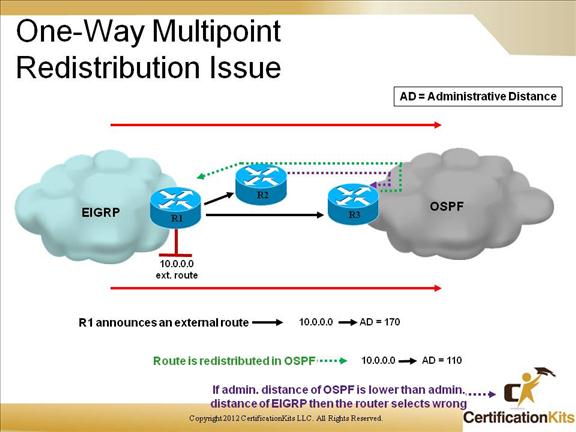
On the slide above, R1 is sending routing updates to both R2 and R3. Both R2 and 3 are running two routing protocols, redistributing between EIGRP and OSPF. Due to multipoint route redistribution being configured, R2 and R3 receive routing updates for the same route directly from R1 (EIGRP) and from R2 / R3 (OSPF). If the administrative distance of OSPF (110 default) is lower than the administrative distance of EIGRP 170 default for external) then R2 selects the wrong route. Instead of routing packets directly to R1, R2 prefers the path via R3 which results in suboptimal routing.
Cisco CCNP ROUTE Two-Way Multipoint Redistribution Issue
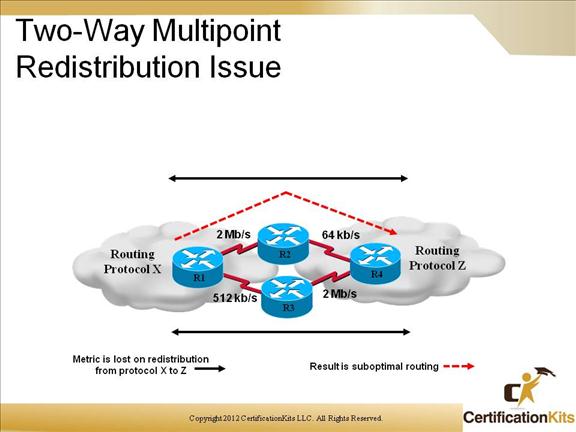
Two-way multipoint route redistribution is the more complex and the most problematic if not implemented carefully and correctly. Most problematic are incompatible metrics. This can cause suboptimal routing and/or routing loops.
Cisco CCNP ROUTE Redistribution Supports all Protocols
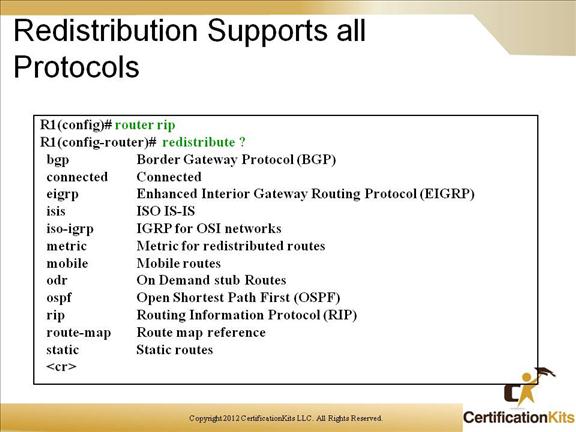
Redistribution is allowed between all routing protocols.
